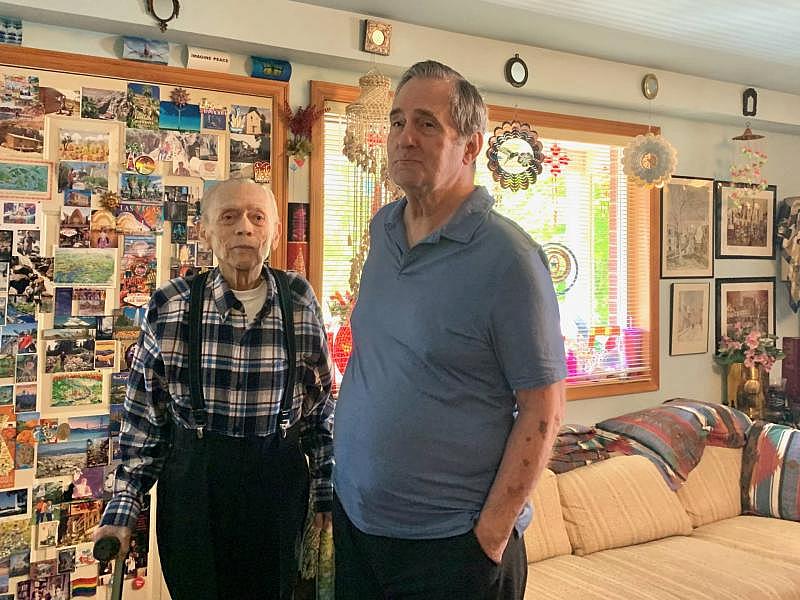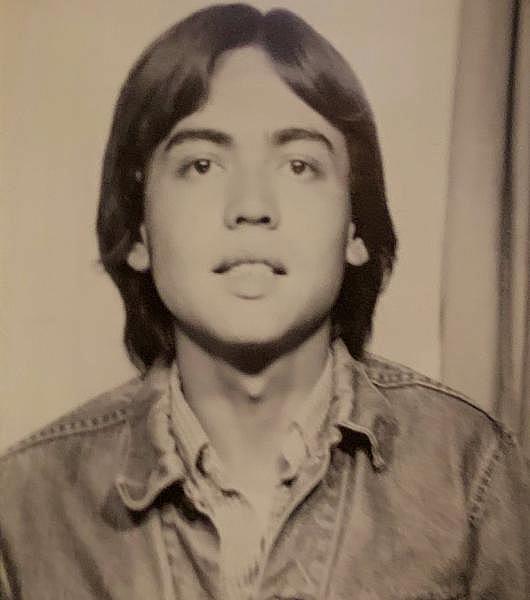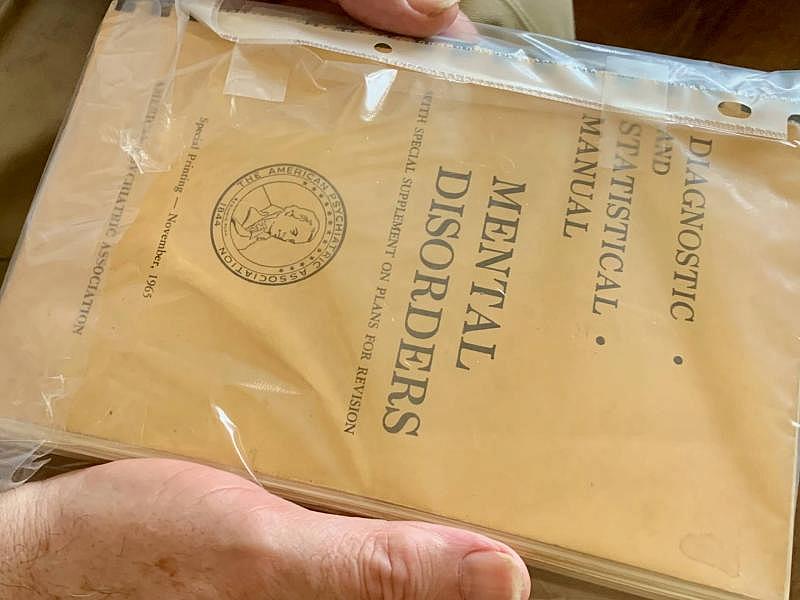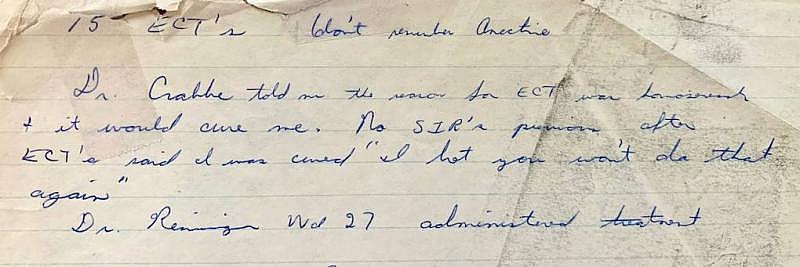This story takes us back to an era before the rights of gay people were recognized as inherent to their humanity and right to privacy. This week, that era seems less far away than it used to.
Friday's U.S. Supreme Court ruling overturning Roe v. Wade makes clear that the removal of a woman's right to privacy and bodily autonomy might next mean the removal of federally protected rights for LGBTQ people.
Indeed, Justice Clarence Thomas, in his opinion concurring with the ruling, wrote that the court “should reconsider” three "demonstrably erroneous decisions:” Griswold v. Connecticut, a 1965 decision granting married couples the constitutional right to contraception; Lawrence v. Texas, a 2003 case that struck down anti-sodomy laws; and Obergefell v. Hodges, the 2015 case granting gay couples the constitutional right to marry.
This story is a collaboration between MindSite News and KQED's The California Report Magazine.
Gene Ampon committed the poem he called “Spider Spider” to memory when he was a teenager locked in solitary confinement at Atascadero State Hospital. It was the early 1960s, and across the country, state laws and psychiatric diagnoses had converged to create a dark era for LGBTQIA+ people – especially gay men.
Spider, spider, along the ceiling slide
spin your prison cell locking me inside,
now should my fearful trembling send
a tremor through your webbed descent
then it is true what I surmise
that men their dreadful dooms devise
on as thin a silk as yours.
- Gene Ampon, #11302
Atascadero State Hospital, circa 1962
The state psychiatric facility on California’s central coast had opened just eight years before Ampon got there, proudly proclaiming to be the only one in the world to specialize in the treatment of “sexual deviants.” Scholars would come to describe it as the most notorious facility in the Western United States to confine and mistreat gay men.
Most patients were adults who’d been targeted, entrapped and arrested for public displays of gay behavior. And because “homosexuality” was considered a psychiatric disorder, judges could commit them to Atascadero – sometimes before their criminal cases had been adjudicated – for evaluation and indefinite treatment.
Others weren’t even adults.
Ampon was just 16 years old when law enforcement delivered him to the locked hospital. His story is part of a dreadful chapter in California history, when gay men, and even teens, were confined by the state and subjected to treatments that today would be considered torture.
It’s a time that’s been largely forgotten, crowded out by celebrations of LBGTQIA+ Pride. Yet it’s essential that we remember. Because gay rights are once again under attack – in Florida, Texas, Alabama and beyond.
As in most bleak chapters of history, there are points of light – heroes who rejected the notion of “homosexuality” as a mental illness, and galvanized a movement that brought about radical change.
Gene Ampon and Roger Anderson had been together for 44 years when a reporter visited their Seattle home on Queen Anne hill in August 2021. Their walls are covered in photos and postcards of their global adventures. (Lee Romney/KQED)
The 75-year-old Gene Ampon agreed to an interview in August 2021. The Seattle home he’s shared with his life partner for four decades sits atop peaceful Queen Anne Hill. Wind chimes that Ampon collected cover the porch.
He suffered a stroke in 2019, and at the time of the interview he had just completed a round of chemotherapy for cancer in his liver and lungs. His hope in openly sharing his experience, he said, was that “moving forward,” the country and world would have more “enlightened attitudes toward dealing with gay people, especially young gay people.”
Ampon was born in the Bay Area in 1946 to a Filipino father and Irish mother, who soon split up. Money was tight and chaos in his home life gave him some freedom to roam. At age 13, he was spending school days at an arcade near San Francisco’s Tenderloin and its thriving gay scene.
“I used to like pinball machines,” he said. “And there were always older men who would say, ‘Oh you need another quarter?’ I said sure, why not?”
Soon, Ampon was lying about where he was spending the night in order to hang out with other gay teens – and hook up with men for a place to sleep and a free meal.
“We did actually a lot of cuddling,” he said, “and there was some sex.”
He’d been picked up for truancy before, so Ampon was on the radar of local police. One day, while he was having lunch at a diner, officers strolled in to question him. He landed in juvenile hall and “it snowballed from there.” He said youth corrections officials told him they didn't want his “homosexuality” to corrupt other kids, so they moved him through a series of youth facilities for nearly five months.
Men in Ampon’s era were often criminalized for being gay. They could be charged with “lewd and lascivious behavior” for simply holding hands, kissing in public or dancing in a bar. Undercover cops who posed as potential sex partners entrapped men in public parks and restrooms. Charges included solicitation, loitering, vagrancy and indecent exposure. Oral and anal copulation carried more serious consequences.
But Ampon was a juvenile, so all he had to do to get locked up was skip school and hang around the gay scene. Because back then, a judge could find a teen to be a “psychopathic delinquent” simply for violating social norms. If their parents or guardians agreed, they’d get shipped off to a state facility for an indefinite stay.
With the perspective of time, Ampon can laugh at the label.
“It kind of sounds like you're little monsters,” he said. “It wasn’t like I’d killed somebody or stole something, but they didn’t really have any idea what to do with gay kids.”
Gene Ampon shortly after his release from Atascadero State Hospital. The photo is among many that cover the walls of the Seattle home that he and Roger Anderson have shared for decades. (Courtesy Roger Anderson)
Ampon insisted that his years at Atascadero do not define him. But as a young man, he conceded, “I was angry.” He wrote an account of his confinement after his release that was published by two gay newspapers in the early 1970s. He dedicated his prose poem to “all homosexual prisoners who must daily endure heterosexual justice-oppression.”
In that written account, he described how guards came to his cell with the judge’s order, signed by his parents, too. Soon, he was in handcuffs in the back of a Sheriff’s car, headed to Atascadero.
The car sped south along the California coast stretching, snapping the ties of family and home. Sitting, watching his childhood fade thru the rear-view mirror into mile-long years of fog behind. Reminding himself to not let them know they’d hurt him; his defiance shackled to the backseat. Imprisoned by names he’d been labeled with: Incorrigable, truant, vagrant, queer, faggot, punk. “A Menace to Society,” he recalled them saying; a crime whose only victim was himself.
Like everyone committed to Atascadero, Ampon was considered a patient, not a prisoner. He was there for “treatment,” because “homosexuality” had been listed in the DSM – the Diagnostic and Statistical Manual of Mental Disorders – since the first edition was published by the American Psychiatric Association (APA) in 1952.
In 1973, the APA removed the diagnosis of "homosexuality" as a mental illness from the DSM.
'Homosexuality' was listed in the DSM – the Diagnostic and Statistical Manual of Mental Disorders – beginning with the first edition, published by the American Psychiatric Association in 1952. Gene Ampon’s life partner, Roger Anderson, obtained a rare copy of this 1965 supplement. It moved all types of so-called 'sexual deviance,' homosexuality included, to the catagory of 'sociopathic personality disturbance,' from the former 'psychopathic personality disorder with pathologic sexuality.' (Lee Romney/KQED)
But if you were gay in 1962, when Ampon got to the hospital, you’d be diagnosed with “psychopathic personality disorder with pathologic sexuality.”
The teens at Atascadero were in the minority, housed with grown men, some of whom were seriously mentally ill and had committed violent crimes. On Ampon’s second day, a group of adult patients sexually assaulted him.
“It was in the utility room, one of the few rooms that didn’t really have a door,” he said. “It’s where the buckets and mops were.”
To reclaim some power, he converted future assaults into transactions – agreeing to sex in exchange for cigarettes and food.
“I guess I was a growing boy and I always wanted more,” he said, “kind of like Oliver Twist.”
Atascadero would get excoriated in the radical gay press in the early 1970s for a host of inhumane treatments. One headline picked up nationwide described the facility as a “Dachau for Queers.” A review of historical records indicates that by the time those reports were circulating, the worst was over. But in Ampon’s day, there was no radical gay press in existence to call attention to the horrors.
Transorbital lobotomies, performed with an ice pick, occurred largely during the 1950s and were rare by Ampon’s time. But electroconvulsive shock therapy was in full force for all kinds of patients, not just gay patients. Some received as many as 60 treatments in a single year.
Handwritten notes from an Atascadero research assistant describe one gay patient’s experience. (Lee Romney)
Handwritten notes from an Atascadero research assistant describe one gay patient’s experience. He was given ECT in the late 1960s to “cure” his attraction to men. Then the doctor taunted him, “I bet you won’t do that again.” Ampon knew about these treatments, and wrote about them in his prose poem.
He saw the electric shock box wheeling down the hall
stopping at someone else’s room; the guards taunting
him with the threat, “Your turn next.”
A new terror shot through his thoughts as the overhead light
flickered while each jolt burned into some unfortunate brain.
Ampon’s age spared him the electroshock. Instead, for more than two years, he got a morning dose of phenobarbital – a barbiturate used to control seizures or, for very short periods, to control anxiety. Psychiatric medication was relatively new but widely used, often with the sole goal of sedating patients.
Ampon was also punished with solitary confinement, he said. The longest stint stemmed from “a puppy love” crush. When hospital guards noticed the friendship, they shipped his crush off to prison, and Ampon to a sweltering windowless concrete cell, with nothing but a thin sleeping mat. He spent a month there, lost in thought, composing poems about spiders and doom.
Beyond punishment and pills, "treatment" consisted of pressuring Ampon to not be gay.
“I remember this one doctor who was talking about homosexuality,” Ampon recalled with a mischievous smile. “And he said, 'Well, there is a normal homosexual period between 8 and 12 and then beyond that it’s abnormal.' So I piped up and said, ‘Is that a.m. or p.m.?’”
His humor was a testament to his resilience even then. But Ampon wanted out, and he’d end up trying to play the game, telling his treatment team he wanted to “explore” heterosexual experiences “They thought that was good,” he said.
When Gene Ampon turned 18, in mid-1964, he was released. His parents had hardly visited. He was on his own, with no follow-up support. As it happens, he got out just in time. Because “treatment” at Atascadero was about to become even more sadistic.
Read a full-length version of this story at MindSite News, and learn about a few key people who stepped in to fight on behalf of gay men while they were confined at Atascadero, and as they were released to the community.
Lee Romney is an independent journalist with a specialty in mental health and criminal justice. Jenny Johnson is a former public defender who co-founded San Francisco’s Behavioral Health Court. This story is a preview of their podcast-in-production, November In My Soul, about mental illness, confinement and liberty in California.
Their reporting has received support from a California Humanities California Documentary Project Production grant; the USC Annenberg Center for Health Journalism California Impact Fund; and the California Health Care Foundation. Also, they also thank the research librarians at the ONE National Gay & Lesbian Archives at USC, and at the California State Archives.
[This article was originally published by KQED.]
Did you like this story? Your support means a lot! Your tax-deductible donation will advance our mission of supporting journalism as a catalyst for change.







